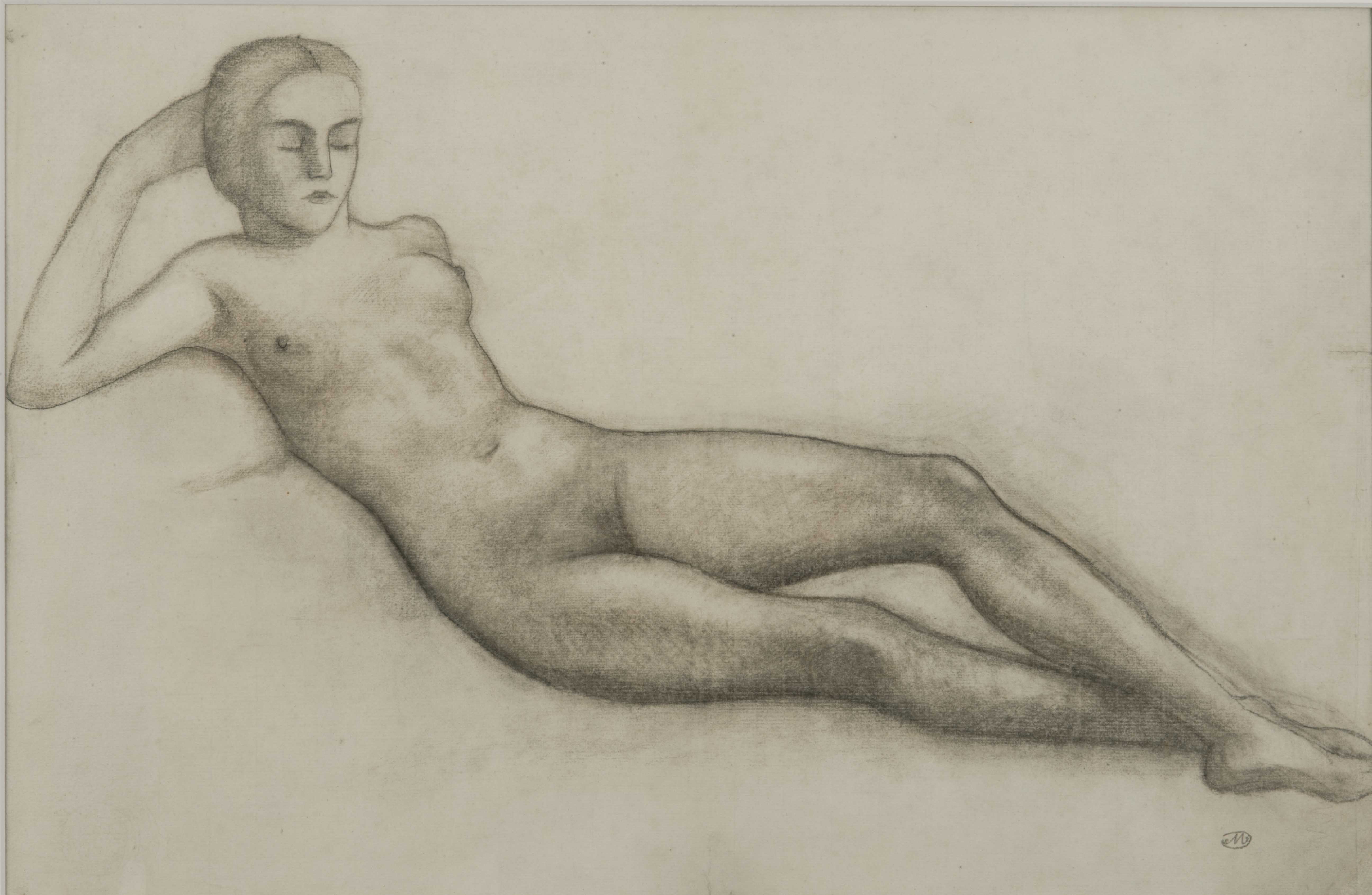Aristide Maillol
|||||||||||
(Banyuls-sur-Mer, 1861 – Banyuls-sur-Mer, 1944)
Aristide Maillol was one of the most famous sculptors of his day. His work, based on ample forms developed from the female nude but simplified to the extreme of a pure outline, is silent and represents a true artistic revolution that would lead to the emergence of abstraction. Maillol’s artistic creation represents a turning point between the 19th and 20th century and influenced a significant number of artists including Henry Moore, Arp or Laurens but also found echoes in the work of Picasso, Brancusi and Matisse. Maillol’s work was praised by many great writers such as Octave Mirbeau and André Gide as well as stimulating publications by eminent art critics including Waldemar George and John Rewald.
Maillol began his career with painting and became interested very early on in decorative arts such as ceramics and tapestry. But it was only at the age of forty that he decided to devote himself to sculpture. Born in the Pyrénées-Orientales in 1861, Maillol remained loyal to his Mediterranean origins all his life.
After his studies in Perpignan, he moved to Paris in 1882. His first years there were difficult. He discovered the tapestries of The Lady and the Unicorn at the museum of Cluny in Paris and decided to open his own weaving workshop in Banuyls. His paintings were initially greatly influenced by his contemporaries including Pierre Puvis de Chavannes. In Paris, he joined the Nabis group where he rubbed shoulders with Bonnard, Vuillard and Maurice Denis. His meeting with Gauguin in 1892 was decisive.
The year 1900 marked a turning point in Maillol’s work. During this year, he invented a genuine repertoire of shapes, anticipating his works to come. His first wooden sculptures as well as his models made of raw earth or clay, such as Venus or the Baigneuses Debout, Accroupies, se Coiffant evoked ancient Greek sculptures. The perfection of Leda’s forms impressed Rodin as well as Mirbeau who acquired it in 1902 from a highly successful exhibition at the Vollard gallery.
When Maillol exhibited the plaster of the Mediterranée at the Salon d’Automne of 1905, with the Fauve painters, the show was a triumph. The monumental sculpture represents a seated woman, absorbed in her own thoughts, whose elbow resting on her knee and head supported by her hand form a geometric composition. André Gide described the sculpture saying: “she is beautiful, she does not mean anything, it is a silent work”. This medidative figure, where no individual expression detracts from the overall vision, is a major work, whose smooth architectural structure is symbolic of Maillol’s research.
After the death in 1917 of Rodin, whose sculptural style was always said to be the opposite of Maillol’s, Maillol became the greatest living French sculptor. In the 1930s Maillol represented the renewal of sculpture and produced the Monument à Debussy, with its exquisite soft curves. In 1934, while looking for new forms of inspiration, Maillol met Dina Vierny. This young girl incarnated his ideal in sculpture and became his main model for ten years. She became his muse, his interlocutor and his collaborator. It was she who inspired his late monumental sculptures such as La Montagne, in 1937, that completed a cycle previously started at the beginning of the century, or L’Air, in 1938, a memorial to the Aéropostale aviators, as well as La Rivière, representing a female body tilted backwards who struggles to resist the flowing water that is dragging her relentlessly away and whose face reveals some form of fear. La Rivière was the first sculpture ever representing a person lying on her back, in an unstable equilibrium. This position can be perceived as an allegory of the troubled times that were to come in the Second World War during which Maillol went back to Banyuls-sur-Mer.
After being given two retrospectives in New York and in Basel in 1933, Maillol won international recognition during the universal exhibition of 1937 in Paris where several rooms were dedicated to his work. Maillol began working on Harmonie, his final sculpture, in 1940. With this unfinished sculpture, Maillol reached the pinnacle of his career. The female silhouette, slightly lopsided, reminds us of medieval sculpture and symbolises a synthesis of all his formal research. But contrary to his previous works, it is also a portrait.
Maillol died in 1944 following a car accident, close to his home town, leaving behind him a considerable body of work that we can admire in Paris, in the provinces and abroad. In the Tuileries garden, eighteen sculptures, offered in 1964 by Dina Vierny under the auspices of André Malraux, are exhibited. In 1995, Dina Vierny created a museum in Paris dedicated to his work, the Maillol museum, inaugurated in 1995 by François Mitterand.
By using a synthetic vision, based on the arrangement of masses that marked a radical break from the descriptive art of the 19th century, Maillol paved the way for abstract sculpture, as Cezanne did for painting. From the outset Maillol attempted to capture immobility in sculpture and achieved perfection in the proportions of his statues whether small or monumental. The eternal beauty of Maillol’s work, in the tradition of Jean Goujon or Edmé Bouchardon, reminds us of the figures around the pools, fountains and gardens of Versailles, and establishes Maillol as one of the greatest French artists.

Harmonie
Bronze
155 x 45 x 37 cm

Jeune fille allongée, circa 1925
Fusain et estompe sur papier
51 x 77 cm

Dina à la natte, 1940
Bronze à patine verte
35 x 22 x 40 cm


